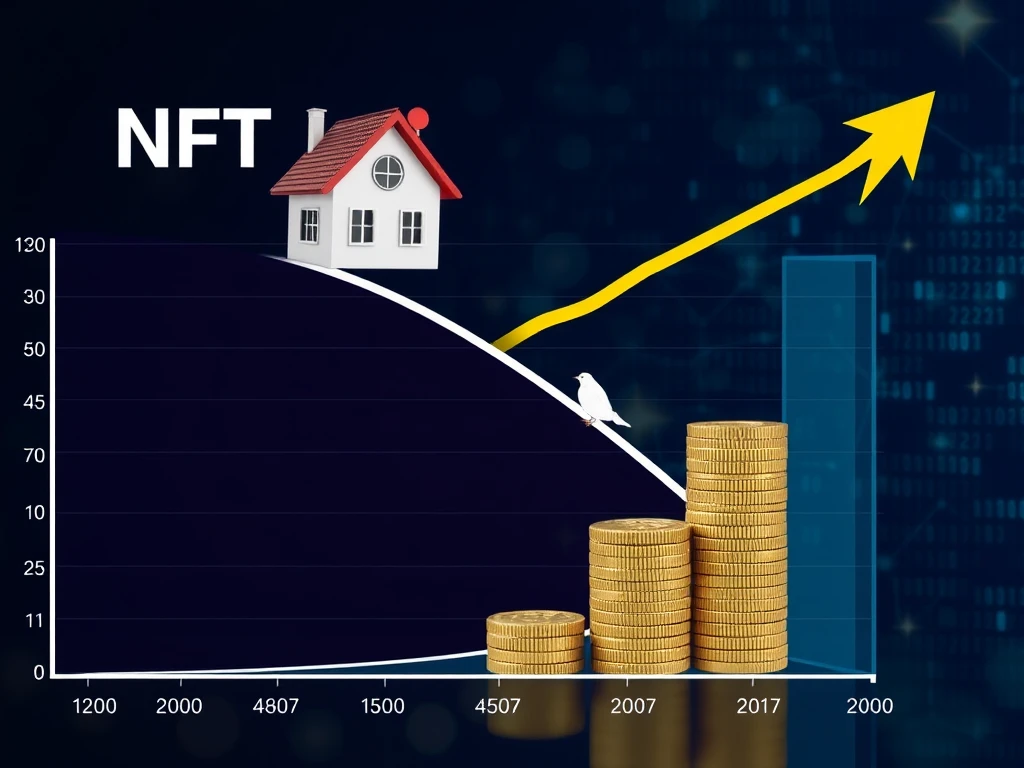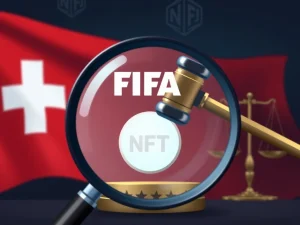Real-world assets Offer Hope for Revitalizing Struggling NFT Lending

The world of cryptocurrency is constantly evolving, and while some sectors soar, others face significant challenges. Currently, the NFT lending market is experiencing a substantial downturn. Recent data highlights a dramatic drop in activity, leaving many wondering about its future. But is there a potential lifeline? A new report suggests a surprising solution could offer hope for revitalizing this struggling sector.
The Dramatic Decline in NFT Lending Volume
According to blockchain analytics platform DappRadar, the NFT lending market has seen its volumes collapse. From a peak of roughly $1 billion in January 2024, volumes plummeted to just $50 million by May. This represents a staggering 97% drop. DappRadar analyst Sara Gherghelas points out this severe contraction, stating the sector needs “new catalysts” to move beyond “survival mode.”
Key indicators of this decline include:
- Overall trading volume collapse (97% drop from peak).
- Borrower activity down 90% since January last year.
- Lender participation shrinking by 78%.
- Average loan size falling from $22,000 in 2022 to $4,000 in May 2024.
This significant drop in average loan size suggests users are either borrowing against lower-value NFTs or exercising more caution with leverage, according to Gherghelas. Loan durations have also shortened, potentially indicating more frequent, tactical borrowing for shorter periods.
Could Real-world assets Provide a Boost?
One of the most promising catalysts identified by DappRadar is the integration of Real-world assets (RWAs) with NFTs. Tokenized real estate, yield-bearing assets, or other tangible goods represented as NFTs could unlock more stable and trusted collateral sources for lending. Unlike speculative digital collectibles, RWAs can offer inherent value and potentially more predictable price floors, which is crucial for crypto lending stability.
This shift towards RWAs could address a core issue plaguing NFT lending: the volatility of the underlying collateral. When the value of the pledged NFT drops sharply, loans become underwater, leading to liquidations and reduced confidence in the market.
Other Catalysts for NFT Lending Recovery
Beyond Real-world assets, the DappRadar report highlights other factors necessary for recovery. Protocols need to make it easier for NFT holders to access liquidity. This involves creating “smart infrastructure,” which could include features like:
- Undercollateralized loans (requiring advanced risk assessment).
- Credit scoring mechanisms for borrowers.
- Artificial intelligence (AI) for better risk matching.
These tools aim to improve efficiency and reduce risk for both lenders and borrowers, potentially attracting more participants back to the market.
The Link to the Broader NFT Market Downturn
It’s important to note that the struggles in NFT lending are closely tied to the overall slump in the NFT market itself. The market saw volumes drop 61% in Q1 compared to the previous year. As collateral value collapses across the board, lending activity naturally follows suit. The “flip-for-liquidity” model, which thrived during bull runs, is not suited for the current risk-averse environment.
The landscape of active NFT lending protocols has also narrowed significantly, with only a handful holding substantial market share.
Shifting Focus and Finding a Second Wind
Despite the current challenges, the DappRadar report doesn’t signal the end of NFT lending. Instead, it suggests a necessary shift in focus. Platforms are diversifying, use cases are evolving, and collateral preferences are changing. The market isn’t finished; it’s adapting.
If the next phase of growth is built on genuine utility, cultural relevance, and improved design, NFT lending could find its “second wind.” This future iteration is likely to be more sustainable, built on more robust foundations like Real-world assets and smarter crypto lending infrastructure, rather than just speculative hype.
Conclusion: Awaiting the Spark
The NFT lending market is currently in a holding pattern, waiting for either a broader market recovery or a compelling new use case. While infrastructure remains, activity is low. The potential integration of Real-world assets stands out as a significant catalyst that could provide the necessary stability and value to reignite interest and volume in this struggling sector. The path forward involves innovation, better risk management, and a focus on long-term utility beyond simple speculation.









